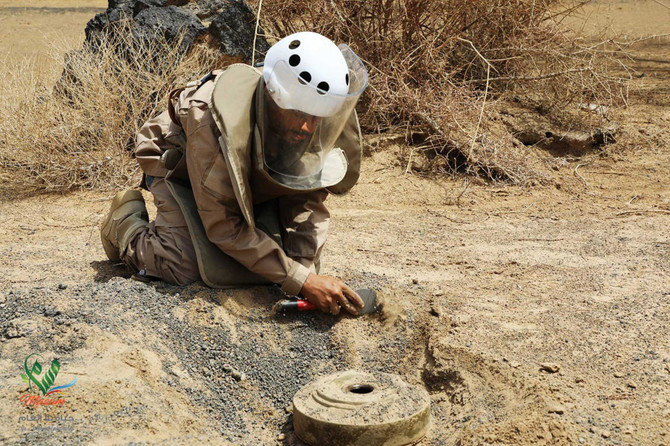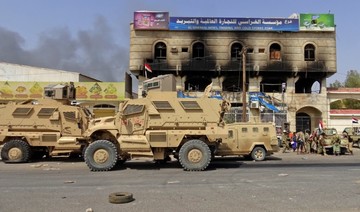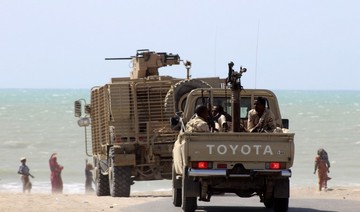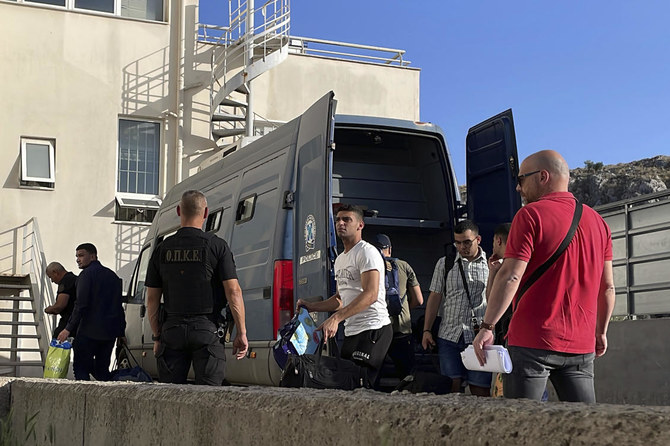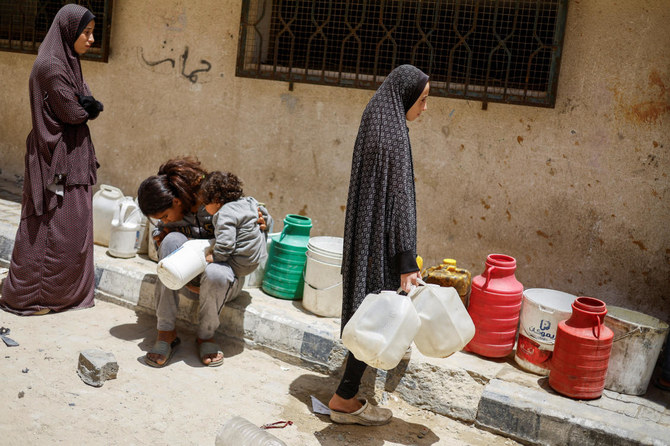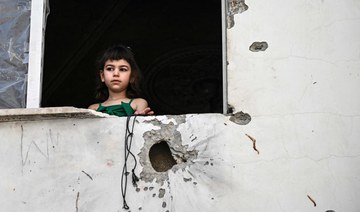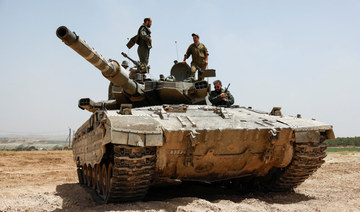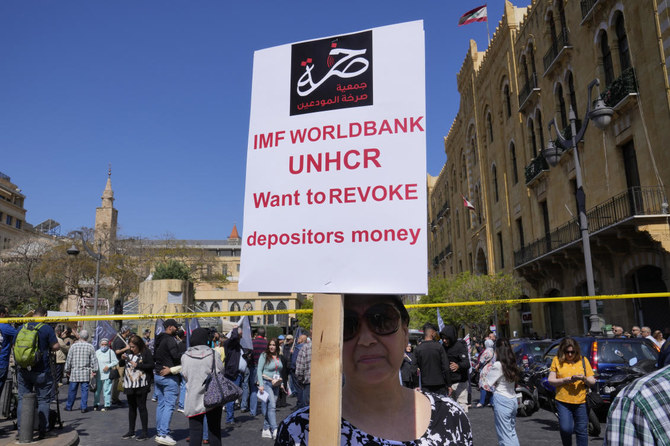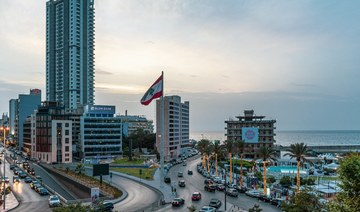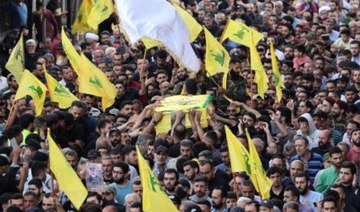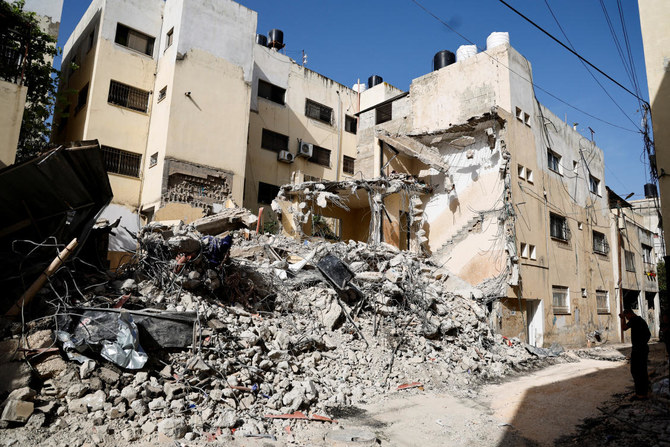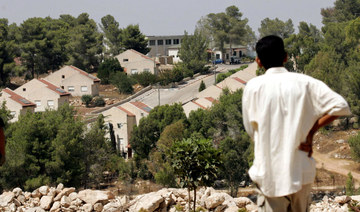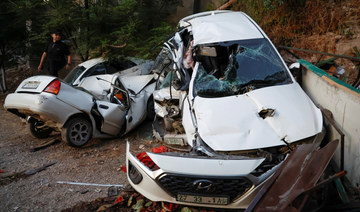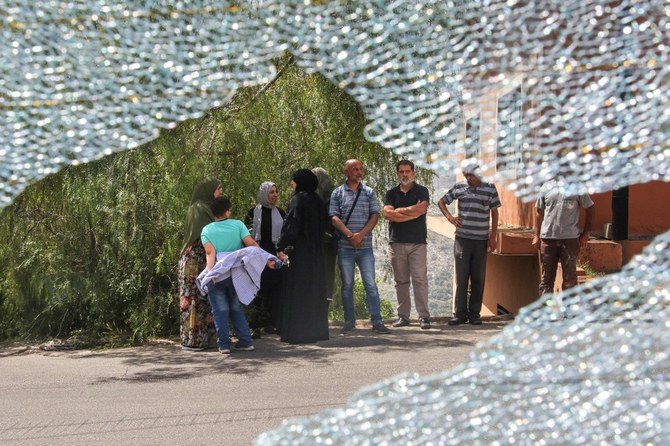ADEN: They lurk under shifting desert sands, amid the debris of urban roadsides and inside abandoned schools, some set to go off at the lightest touch.
Land mines scattered by Yemen’s Houthi militia are largely unmapped and will remain a threat even if the latest push for peace succeeds in halting the conflict, those involved in their eradication say.
While the Houthis’ use of Scud and other retrofitted ballistic missiles has drawn attention for striking deep inside Saudi Arabia, their widespread use of mines represents a risk for generations to come in the Arab world’s poorest country.
“Mines today exist in every single area of Yemen,” Ousama Al-Gosaibi, the program manager for the Saudi-funded Masam demining project, told The Associated Press during a trip to the southern city of Aden organized by the Saudi military. “It’s not being used as a defensive (or) offensive mechanism. It’s being used to terrorize the local population across Yemen.”
Yemen’s war pits the Iran-aligned Houthis against the internationally recognized government.
More than 60,000 people have been killed in the war since 2016, according to the US-based Armed Conflict Location & Event Data Project, or ACLED, which tracks the conflict. The fighting has displaced 2 million, spawned a cholera epidemic and pushed the country to the brink of famine. Millions wake up hungry each day, not knowing from where their next meal will come.
Among the dangers facing combatants and civilians alike are land mines. The Houthis looted government armories when they captured much of northern Yemen, including vast stockpiles of anti-tank mines. Anti-personnel mines also litter the country, despite the government joining a 1997 international convention banning their use.
A UN panel of experts said in 2016 that the Houthis had used land mines in their retreat from the southern city of Aden. Since 2016, land mines and other explosives planted by the Houthis have killed at least 222 civilians and wounded others in 114 incidents, according to ACLED.
“Mines today exist in every single area of Yemen. It’s not being used as a defensive (or) offensive mechanism. It’s being used to terrorize the local population across Yemen.”
“Due to the difficulty of obtaining accurate estimates, these figures are likely to make up a fraction of all mine detonations involving civilians in Yemen,” ACLED said.
Making things worse is the fact that a third of all health facilities in Yemen are closed, said Nasser Baoum, the government’s health minister.
“Mines have caused a huge problem,” Baoum told the AP. “It’s OK for an army person to be injured during battle or to be hit by a mine, but for a child to be hit while she’s in the field or on the way to fetch water, that’s a tragedy.”
Al-Gosaibi accused the Houthis of reconfiguring anti-tank mines that previously needed over 100 kilograms of pressure to detonate so that they require less than 10 kilograms — meaning a child could trigger the explosive.
Yahia Al-Houthi, the former director of the Yemen Executive Mine Action Center, a Houthi-controlled de-mining center, acknowledged the militia use anti-tank mines but denied tampering with them to target individuals. He also claimed the Houthis never used anti-personnel mines, despite widespread evidence to the contrary.
Brig. Gen. Yahia Al-Sarie, a Houthi officer, said the Houthis only use land mines on the battlefield and not in civilian areas. “This is a war, so what do you expect us to do? Receive the other side with flowers?”
He said the Houthis had mapped the mines and would be able to remove them “in no time” once the fighting ends.
Al-Gosaibi accuses the Houthis of using Iran-supplied technology like infrared sensors and of adopting Iranian tactics like hiding bombs inside fake rocks. A report in March by the group Conflict Armament Research said roadside bombs disguised as rocks in Yemen bore similarities to others used by the Iran-backed Hezbollah in southern Lebanon and by Iran-linked insurgents in Iraq and Bahrain.
“It’s going to take years. You cannot rebuild Yemen without addressing the mine issue.”
Mines planted by the Houthis, some resembling a model previously displayed in Iran, also have been found in the Red Sea, according to a 2018 UN experts report. Those mines “represent a hazard for commercial shipping and sea lines of communication that could remain for as long as six to 10 years,” the report warned.
The Saudi-led coalition, Western countries and UN experts accuse Iran of supplying weaponry from assault rifles to ballistic missiles to the Houthis. Iran supports the Houthis but denies arming then, and Iran’s mission to the UN dismissed the latest allegations of “Iranian ghost weapons.”
“Yemen has long been awash with a wide range of weapons — including ballistic missiles — and Yemenis do not need Iranian weapons to conduct war,” said Alireza Miryousefi, a spokesman for Iran’s mission.
Saudi Arabia has alleged as many as 1 million mines may have been laid by the Houthis. Al-Gosaibi described Yemen as being the most-mined nation since World War II, based on his group’s estimate of the mines laid by the Houthis. Saudi officials have released pictures showing fields of deactivated land mines.
International groups dealing with land mines have been hesitant to estimate the scale of the crisis, given the limited information they have. Yemen is also littered with mines from previous conflicts.
“It’s going to take years,” Al-Gosaibi said. “You cannot rebuild Yemen without addressing the mine issue. It’s us on the ground first before rebuilding starts.”


